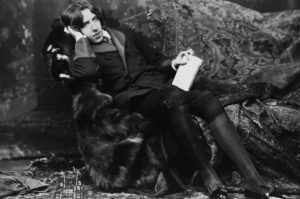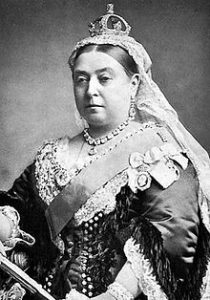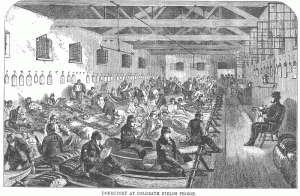The Victorians Surprisingly Liberal Attitude Towards Gay Men
The Victorians’ surprisingly liberal attitude towards gay men
The famous imprisonment of author Oscar Wilde in 1895 for being a homosexual paints a picture of sexual repression and hostility towards same-sex relationships in 19th-century England. But the largest ever survey of court cases relating to the criminalisation of gay men has revealed a surprisingly relaxed attitude towards homosexuality
Tuesday 7th April 2015
Submitted by: Emma Mason
Photo c1882 of Oscar Wilde, who was imprisoned in 1895 for being a homosexual. © Archive Pics / Alamy
Having sifted through more than 280,000 criminal cases at the National Archive at Kew, covering the 1850s through to the 1960s, historian Jeff Evans from Manchester Metropolitan University concludes the supposedly prudish Victorians had a far more lenient attitude to sex between men than their 1960s counterparts.
Here, writing for History Extra, Evans details his findings…
The Victorian attitudes towards sex in general were, as might be expected, extremely complex. The findings of my sample survey of men prosecuted for having sex with other men – more than 280,000 individual cases brought before the senior criminal courts of Assize and Quarter Session – have produced some starting results. Fewer than 313 such trials have been uncovered for the period from 1850 up to the outbreak of the First World War, which at first glance would appear to suggest a rate of fewer than five such prosecutions per year.
This would, perhaps, suggest a highly tolerant attitude towards such behaviour in the later period – a view strengthened when we observe that the sentences dealt to those convicted of the crime of buggery rapidly become more lenient. For example, the ‘Death’ sentence handed down to Joseph Dean at the February sitting of the Liverpool Assize in 1851, automatically converted to transportation for life by this period, was not uncommon in the mid-19th century. Yet by 1903 the sentence dealt for buggery to coal miner William Bradly from Leigh, Lancashire, at the same court was just 15 months’ imprisonment.
But the fact still remains that men were being sent to prison for significant periods for the crime of having consensual sex with each other. There are records of such sentences leading to suicides, both attempted and realised. Interestingly, it was the alleged suicide of Francis Archibald John Douglas (Viscount Drumlanrig) following a failed affair with Liberal politician Lord Rosebery that led his father, the 9th Marquess of Queensberry, to protect his younger son ‘Bosie’ from the alleged ‘corrupting influence’ of Oscar Wilde. That led to Wilde’s trial of the 1890s, perhaps the famous – albeit most atypical – criminal prosecution of sex between males of the period.
The famous Wilde case aside, had the courts really gone ‘soft’ on this crime? Were more lenient sentences a reflection of the emergence of a more tolerant attitude?
For clues, we can look to the writings of Victorian ‘sexologists’ and other authors including Havelock Ellis, Edward Carpenter and John Addington Symonds. In 1913, meanwhile, the novelist EM Forster wrote his ‘gay’ novel Maurice [a tale of same-sex love in early 20th-century England, which follows Maurice Hall from his schooldays onwards].
Such works show that great advances were being made in the understanding of sexual diversity. But how they fared in the political climate of the period is enlightening: Ellis, a leading sexologist of his day, saw his great opus of the topic ‘Sexual Inversion’, written with Symonds in 1897, withdrawn from sale in Britain. He henceforth had all his work published abroad.
Meanwhile Symonds, a great classist scholar, published three works – two versions of A Problem in Greek Ethics and the later work A Problem in Modern Ethics (in 1873, 1983 and 1891 respectively) that sought to justify sex between males within a historical context. But his work was only privately published and circulated, and upon his death his family destroyed his papers. This is indicative of the prevailing attitudes among ‘respectable’ society.
Edward Carpenter, the socialist, also had significant problems finding a printer for Homogenic Love and Its Place in a Free Society (1894). He finally found a small labour press in Manchester, but his work was met with hostility from Dr O’Brien, a member of the Liberty and Property Defence League who was seemingly adverse to both socialism and homosexuality. In 1910 O’Brien produced and circulated a pamphlet entitled Socialism and Infamy: The Homogenic or Comrade Love Exposed: An open letter in Plain words for a socialist Prophet Edward Carpenter. In it, Carpenter was accused of “morbid appetites, naked dancing, corruption of youth, paganism and socialism.”
Double standards
There were also practical exceptions to the British state’s apparent prudishness when it came to sex. The criminalisation of commercial male-female sex only applied to women, for instance: men were not punished.
The sexual demands of the military were also privileged above any ideology regarding sex. The British parliament and government had few problems agreeing to the Contagious Diseases Acts 1864 [which allowed police officers to arrest prostitutes in certain ports and army towns, and which allowed the women to be subjected to compulsory checks for venereal disease] and the Cantonment Acts of 1864 and 1895 for the provision of brothels for the Indian Army.
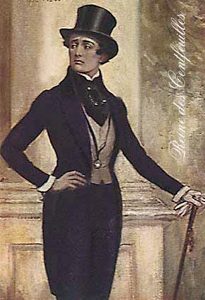 The key problem when considering Victorian sexual morality, however, is the poverty of language that the society of the time had to conceptualise, and therefore decry or celebrate, sexual diversity. The concept of gay men did not properly exist in Victorian England, for instance, because there were no established words to describe them.
The key problem when considering Victorian sexual morality, however, is the poverty of language that the society of the time had to conceptualise, and therefore decry or celebrate, sexual diversity. The concept of gay men did not properly exist in Victorian England, for instance, because there were no established words to describe them.
So while the Victorians might appear tolerant, this was because they held no strong views about a subject that they might observe but were not educated about, nor had the language to discuss. Fast-forward to the 21st century and The Dirty Sex Dictionary (2012) holds some 24,150 terms and expressions; 3,500 quotes and 47,000 synonyms relating to sex. Yet what does it say about modern mores that most of them are considered ‘dirty’, banned from being said on television until after the 9pm watershed?
In conclusion, we might suggest that the Victorians were more tolerant than their 1960s counterparts of sex between males. But given the strict policing of knowledge and even the language used to discuss such intimate behaviours, we must ask – what did that tolerance really mean?
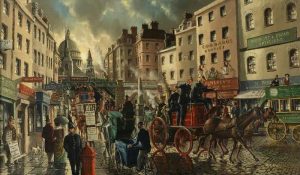
Mitchell, Reginald John|Mitchell, Robert J.; Victorian London Street Scene; Beamish, The North of England Open Air Museum; http://www.artuk.org/artworks/victorian-london-street-scene-43714
Source: History Extra
To find out more about Evans’s research, click here.

